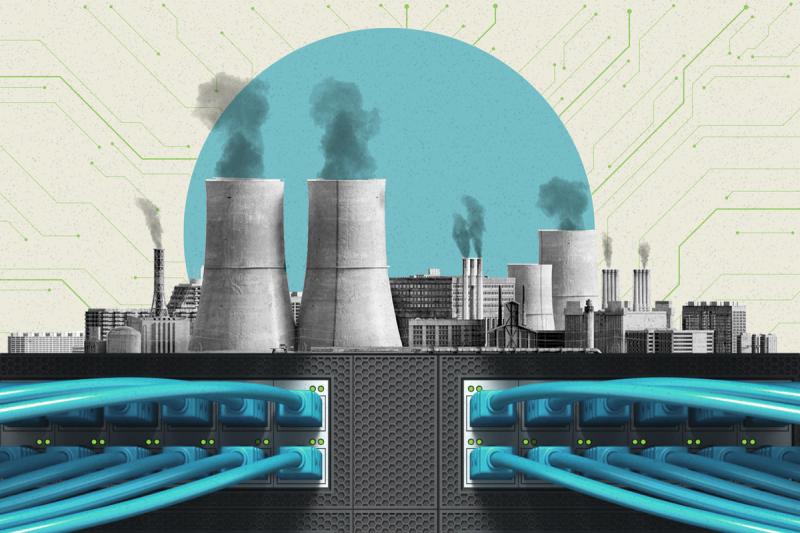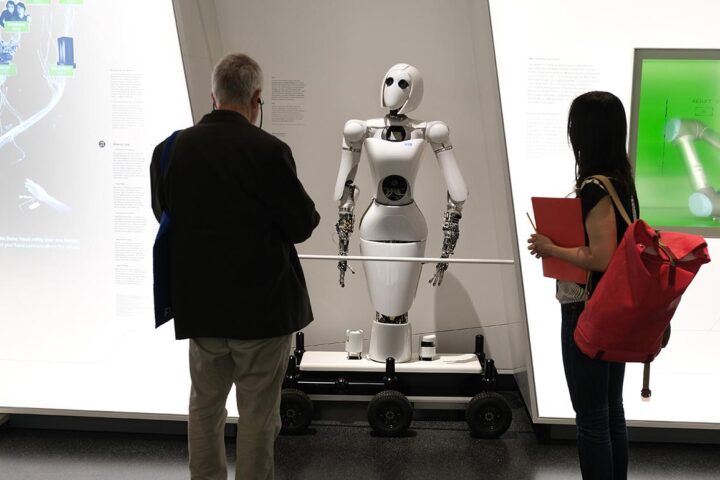The global energy transition faces a paradox: artificial intelligence (AI) is both a driver of decarbonization and a new source of energy demand that threatens it. From optimizing renewable grids to enabling autonomous industrial processes, AI promises efficiency gains—but its exponential growth in computing and data processing is fueling unprecedented electricity consumption, creating a tension between sustainability ambitions and energy realities.
Industry leaders, policymakers, and investors are grappling with a critical question: Can AI’s transformative benefits coexist with decarbonization goals, or will the technology become a new obstacle to climate targets?
AI as a Catalyst for Energy Efficiency
AI’s impact on energy and decarbonization is widely celebrated in sectors where optimization can reduce emissions and increase system flexibility:
- Smart grids leverage AI to balance renewable generation with demand, reducing reliance on fossil-fueled peaker plants.
- Industrial automation minimizes energy waste in factories and chemical processes.
- Building management systems use AI to optimize heating, ventilation, and cooling, cutting electricity consumption.
- Predictive maintenance reduces operational inefficiencies, extending equipment lifespans and lowering energy-intensive replacements.
Analysts note that, if deployed strategically, AI could reduce global carbon emissions by hundreds of millions of tons annually, particularly when combined with clean energy investment and electrification of transport and industry.
The Energy Appetite of AI
Despite efficiency gains, AI’s rapid adoption comes with a formidable energy footprint. Large-scale generative AI models, data centers, and cryptocurrency mining rely on high-performance computing infrastructure, which consumes enormous quantities of electricity:
- Data centers housing AI models operate 24/7, often requiring constant cooling and power redundancy.
- Training advanced models can consume hundreds of megawatt-hours per iteration, comparable to the annual energy usage of small towns.
- Cloud computing providers are scaling AI operations globally, increasing total grid demand and strain on power infrastructure.
This rising consumption is not confined to wealthy nations. AI deployment is global, and emerging markets with limited grid capacity are facing new energy stress.
Implications for Power Grids and Energy Policy
The energy demands of AI are reshaping investment patterns in electricity generation:
- Grid operators must balance intermittent renewables with consistent baseload capacity, increasing reliance on fossil-fueled backup generation in many regions.
- Energy affordability comes under pressure as higher electricity consumption pushes up wholesale prices.
- Infrastructure investment in transmission and storage must accelerate, or risk shortages during peak AI-driven computing loads.
Policymakers face a dual mandate: enable AI-driven innovation while ensuring grid stability and adherence to climate commitments.
Investment Shifts: Renewables, Fossil Fuels, and Storage
The AI-driven energy surge is altering capital allocation across the energy sector:
- Renewables remain attractive but face intermittency challenges.
- Natural gas and coal are experiencing a resurgence in some regions as backup sources.
- Energy storage solutions—batteries, pumped hydro, and emerging technologies—are increasingly vital for smoothing AI-induced demand spikes.
- Grid modernization and smart infrastructure are receiving higher priority in corporate and government budgets.
Analysts caution that without careful planning, AI adoption could temporarily increase fossil fuel reliance, undermining near-term decarbonization goals even as long-term efficiency gains materialize.
The Paradox of Progress
The AI-energy nexus highlights a paradox: technology designed to optimize systems and reduce emissions can inadvertently drive higher energy use and carbon intensity. This is sometimes described as the “rebound effect,” where efficiency gains lead to increased consumption.
In practical terms:
- AI-driven industrial automation reduces per-unit energy use but enables higher production volumes.
- Smarter grids improve efficiency but support larger data center expansions.
- Energy savings in one sector may be offset by new consumption elsewhere, particularly in AI training and deployment.
The result is a complex interplay between innovation and sustainability, requiring multi-sector coordination and forward-looking energy policy.
Toward a Sustainable AI Future
Experts suggest several strategies to balance AI growth with decarbonization:
- Green data centers: Use of renewable electricity and advanced cooling technologies to reduce AI’s carbon footprint.
- Energy-aware AI algorithms: Designing models that minimize computational intensity without compromising performance.
- Regulatory incentives: Encouraging renewable power use for high-energy computing workloads.
- Integrated energy planning: Coordinating AI deployment with grid expansion, storage, and peak-demand management.
- Global collaboration: Aligning technology standards and climate targets to prevent carbon leakage from AI-intensive industries.
If implemented effectively, AI can remain a net contributor to decarbonization, transforming industrial, transport, and urban energy systems while mitigating its own energy footprint.
Conclusion: AI as Both Opportunity and Challenge
The rapid growth of AI underscores a central tension in the energy transition. While AI can accelerate the path toward efficiency and lower emissions, its voracious appetite for electricity raises costs, stresses grids, and may temporarily increase fossil fuel reliance.
Policymakers, investors, and technology leaders face a critical task: harness AI’s potential without letting its energy demands derail global decarbonization efforts. The next decade will determine whether AI becomes a cornerstone of sustainable progress or an unexpected barrier to climate objectives.



























